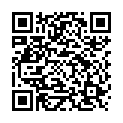|
|
|
| Module code: MST.PST |
|
|
2V+2PA (4 hours per week) |
|
5 |
| Semester: 5 |
| Mandatory course: no |
Language of instruction:
German |
Assessment:
Documentation and circuit board
[updated 05.10.2020]
|
MST.PST (P221-0122) Mechatronics and Sensor Technology, Bachelor, ASPO 01.10.2012
, semester 5, optional course, technical
MST.PST (P221-0122) Mechatronics and Sensor Technology, Bachelor, ASPO 01.10.2019
, semester 5, optional course, technical
MST.PST (P221-0122) Mechatronics and Sensor Technology, Bachelor, ASPO 01.10.2020
, semester 5, optional course, technical
MST.PST (P221-0122) Mechatronics and Sensor Technology, Bachelor, ASPO 01.10.2011
, semester 5, optional course, technical
|
60 class hours (= 45 clock hours) over a 15-week period.
The total student study time is 150 hours (equivalent to 5 ECTS credits).
There are therefore 105 hours available for class preparation and follow-up work and exam preparation.
|
Recommended prerequisites (modules):
None.
|
Recommended as prerequisite for:
|
Module coordinator:
Prof. Dr.-Ing. Barbara Hippauf |
Lecturer:
Dipl.-Ing. Hans-Joachim Bohr
[updated 28.11.2012]
|
Learning outcomes:
In this course, students will apply what they have learned so far in the above-mentioned subjects. Within the framework of a project, students will become familiar with the development of an electronic circuit from the definition of the task to the finished, functional printed circuit board.
[updated 05.10.2020]
|
Module content:
Students will independently design the circuit diagram of an electronic circuit for a given task and create the layout of the printed circuit board using corresponding PC programs.
The circuit board will then be produced, assembled, commissioned and documented in detail by the students.
Tasks can include sensor evaluation circuits, actuator control circuits, displays, control elements, signal interfaces and microcontroller circuits.
[updated 05.10.2020]
|
Recommended or required reading:
Lecture notes, application instructions from semiconductor manufacturers, data sheets
[updated 05.10.2020]
|


